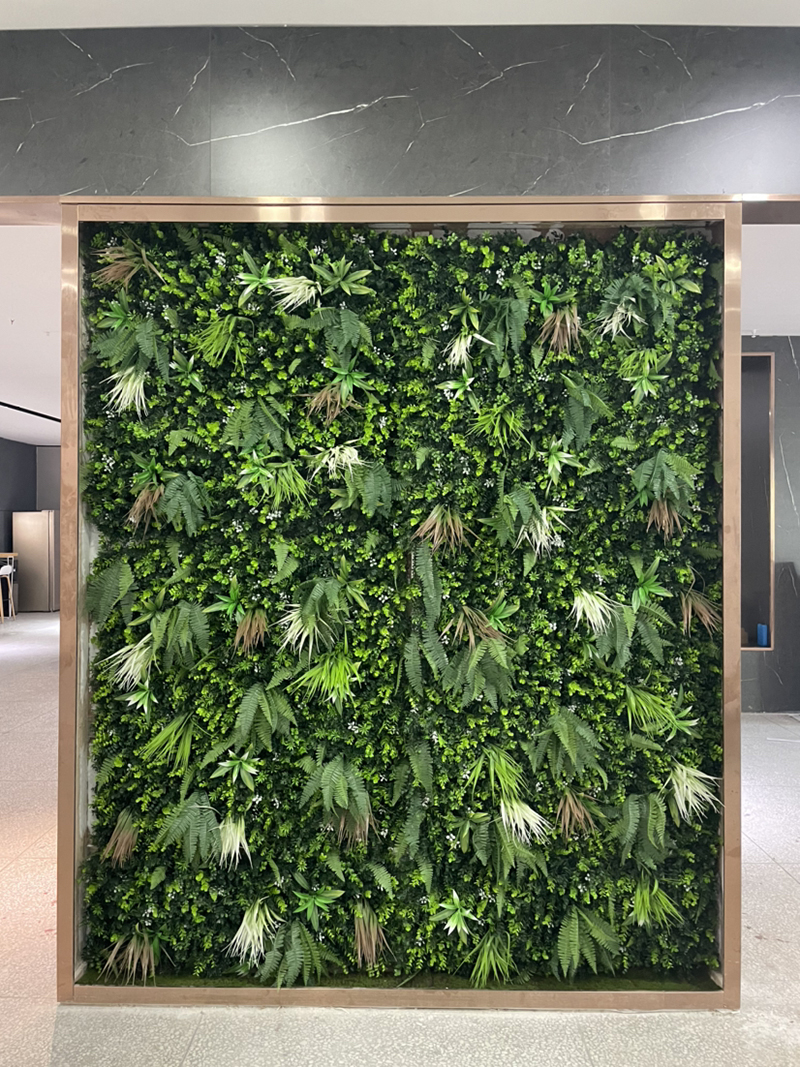Maintaining Ecological Balance in 3D Artificial Vertical Gardens
Creating a thriving 3D artificial vertical garden requires more than aesthetic design—it demands a strategic approach to ecological balance. These structures, while man-made, can mimic natural ecosystems by integrating plant diversity, water management, and soil health. Below are key principles to ensure sustainability and harmony in such installations.

Plant Selection for Biodiversity
A resilient vertical garden thrives on diversity. Choose plant species with varying root depths, growth rates, and environmental tolerances to prevent dominance by a single type. For instance, combine shallow-rooted herbs like thyme with deep-rooted ferns or flowering perennials. This layering supports pollinators and reduces pest outbreaks by disrupting monoculture patterns. Additionally, prioritize native species adapted to local climate conditions, as they require fewer resources and foster regional biodiversity.
Incorporating plants with complementary functions enhances stability. For example, pair nitrogen-fixing species (e.g., clover or legumes) with ornamental varieties to enrich soil nutrients naturally. Avoid invasive plants that may outcompete others or disrupt surrounding habitats. Regularly rotate or replace plants to mimic natural succession and prevent depletion of specific nutrients.
Water and Nutrient Management Systems
Efficient irrigation is critical for preventing water waste and root rot. Drip irrigation systems with adjustable flow rates deliver moisture directly to plant roots, minimizing evaporation. Pair this with moisture-retentive substrates like coconut coir or perlite to maintain hydration without waterlogging. For larger installations, consider recirculating systems that filter and reuse water, reducing consumption by up to 90% compared to traditional methods.
Nutrient balance is equally vital. Synthetic fertilizers can accumulate and harm beneficial microbes, so opt for organic alternatives like compost tea or slow-release granules. Monitor pH levels regularly, as imbalances can inhibit nutrient uptake. In hydroponic setups, use balanced nutrient solutions tailored to plant species and growth stages. Automated sensors can provide real-time data on soil moisture and nutrient concentrations, enabling precise adjustments.
Pest and Disease Prevention Through Natural Methods
Chemical pesticides disrupt ecological harmony by harming non-target organisms. Instead, adopt integrated pest management (IPM) strategies. Introduce predatory insects like ladybugs or lacewings to control aphids and mites. Companion planting—such as marigolds to repel nematodes—can deter pests without chemicals. Regularly inspect leaves and stems for early signs of infestation, and remove affected plants promptly to prevent spread.
Disease prevention relies on proper airflow and sanitation. Space plants adequately to reduce humidity and fungal growth. Use sterile tools when pruning or transplanting to avoid introducing pathogens. For persistent issues, apply neem oil or baking soda solutions, which disrupt pest life cycles without toxic residues. Rotate crops annually to disrupt disease cycles in soil-based systems.
Long-Term Monitoring and Adaptation
Ecological balance is dynamic, requiring ongoing observation. Track plant health, growth patterns, and pest populations through seasonal changes. Adjust irrigation schedules based on weather conditions—reducing frequency in rainy seasons, for example. Replace struggling species with hardier alternatives and introduce new varieties to maintain genetic diversity.
Engage with local ecological networks by sharing data on plant performance and pest trends. This collective knowledge can identify emerging threats, such as climate-driven shifts in pest ranges. By treating the vertical garden as a living experiment, you contribute to broader research on urban ecosystem resilience.
By prioritizing biodiversity, resource efficiency, and natural pest control, 3D artificial vertical gardens can serve as models for sustainable urban greening. These principles not only enhance aesthetic appeal but also create self-sustaining habitats that benefit both humans and wildlife.
Contact: Amy
Phone: 86-15311787313
E-mail: info@foszmac.com
Whatsapp:86-15311787313
Add: Fengtai District, Dacheng Road, No.24 Building, Room 203, Beijing, China